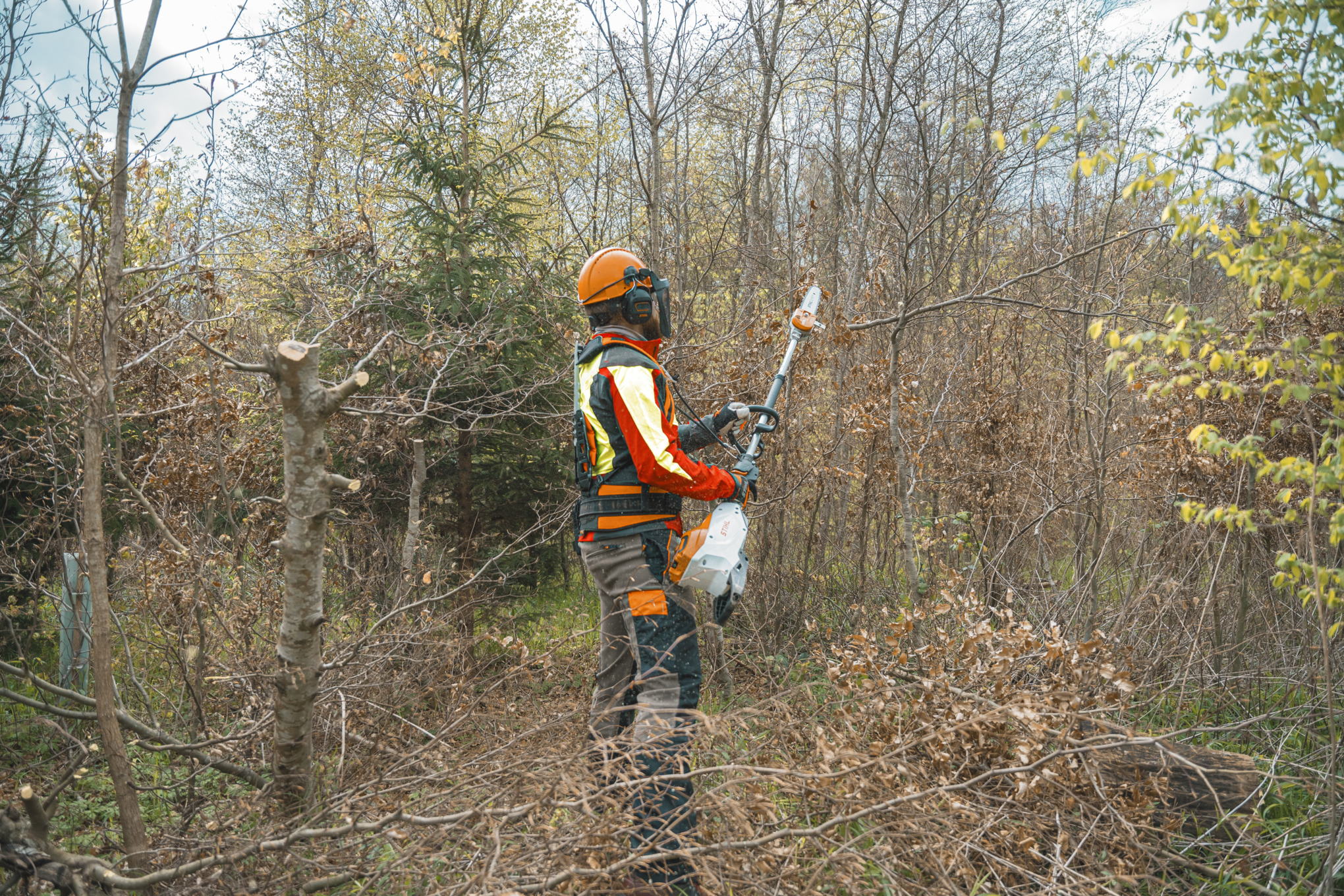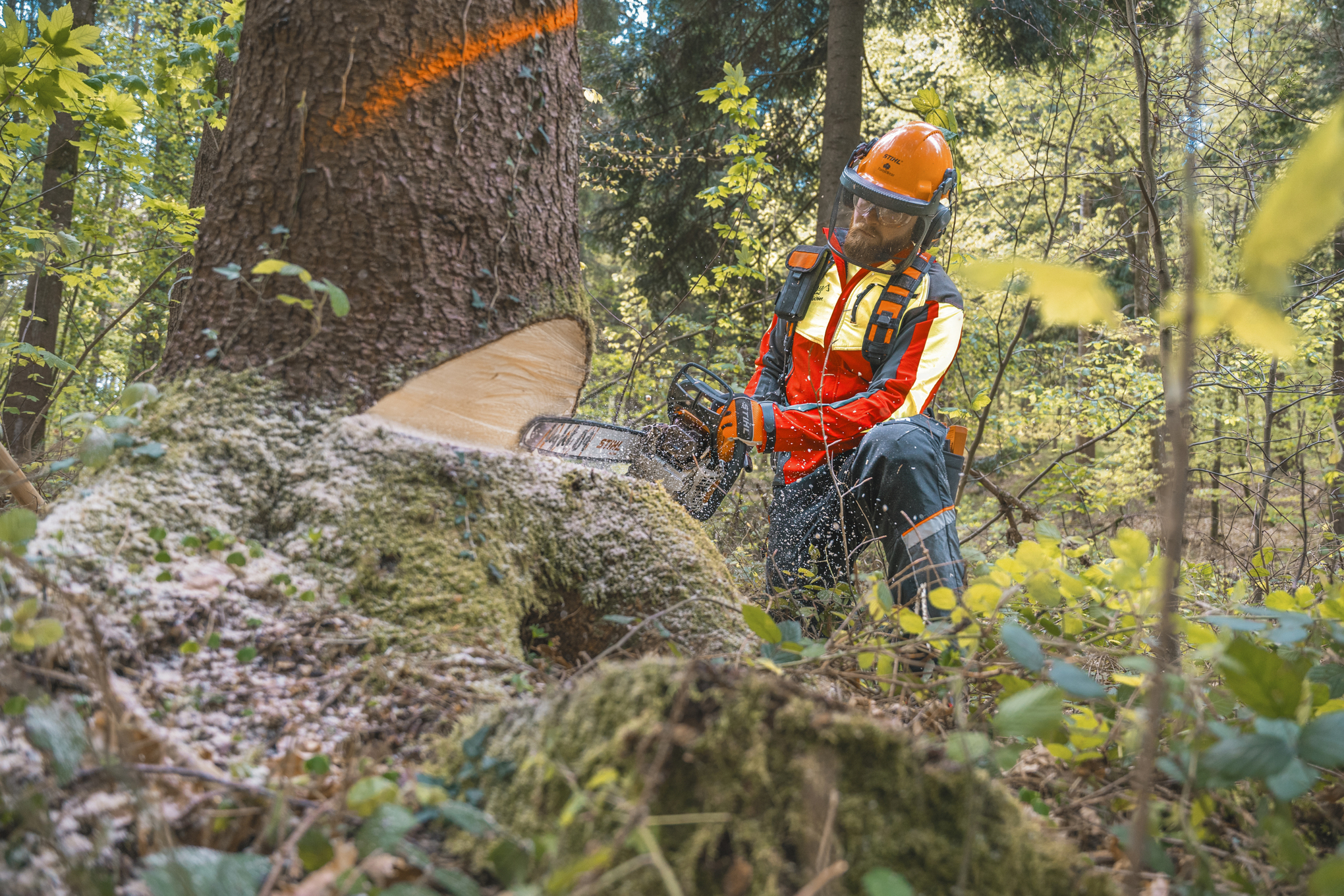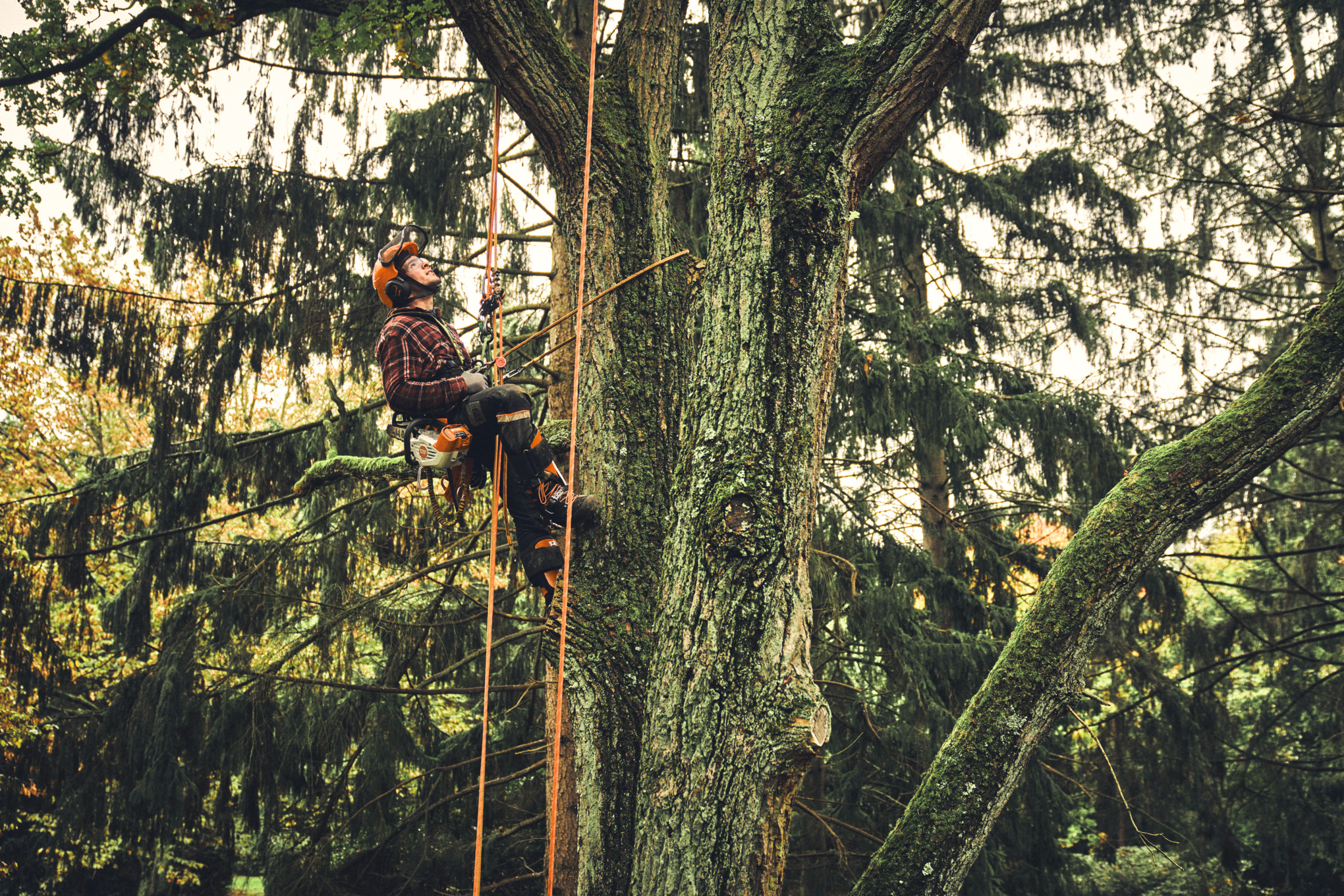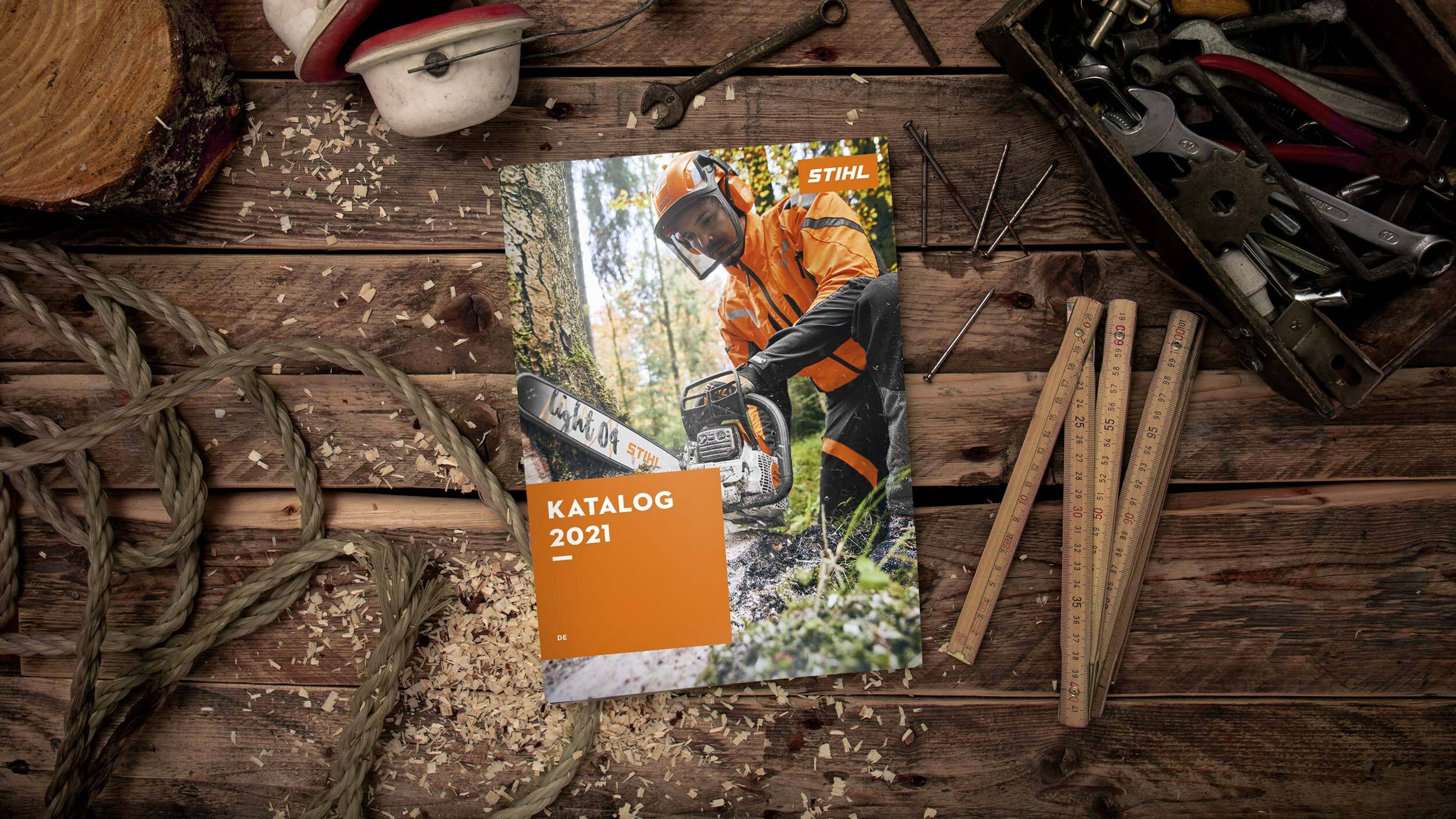Forest restoration – trees for the future
Forest restoration is essential as a means of creating healthy mixed woodland to help counter the challenges of climate change.
05.11.2025
Overview: how to make forest restoration successful
- Climate change is increasingly leading to extreme weather events which make forest restoration necessary.
- It is far better for a forest to contain healthy mixed woodland than ageing single-species growth.
- Monitoring, AI and modern satellite mapping are useful tools which can support decision-making and strategy development in this area.
- If natural regeneration is not successful on its own, artificial regeneration can be used to supplement the existing trees with resilient newly introduced species.
- Powerful, ergonomic STIHL battery power tools, with no exhaust emissions and low vibration, support efficient forest restoration.
Oak, Douglas fir, cedar and various other species which cope well with extreme weather events such as heatwaves are suitable for forest restoration. The objective is to build a forest made up of “climate heroes”.
The optimal deciduous to coniferous ratio is heavily dependent on the location. The final blend should contribute to preserving soil functions and ensuring the forest continues to be productive.
In many places this can be achieved with a mixture of 30% deciduous and 70% coniferous species. In high altitudes and well-irrigated locations, the proportion of coniferous wood can be higher.
Forest restoration is evaluated by means of regular monitoring, soil sampling, remote sensing and checking on growth. These methods generate information which can be used to determine what adjustments are needed in response to changing climatic conditions or site-specific circumstances.
Forest restoration & climate change
Climate change means profound changes for the forest ecosystem and presents enormous challenges for forestry. Long periods of drought, forest fires, storms, heavy rainfall and bark beetles can all cause extensive tree dieback and necessitate proactive, ecological forest restoration which must be easily implemented – to make forests which are better able to cope with a warmer climate and more extreme weather conditions.
Tree species such as spruce, pine and beech in particular are expected to be subject to increased rates of dieback. Spruce has a flat root system which means it will struggle during drought, for example, and is also more likely to be uprooted during ever-more-frequent storms. This vulnerability impairs the sustainable stability of the forest.
Single-species stocks are increasingly unstable and no longer sufficiently reliable, which is why there is a move away from single-species stocks and over-mature forests to healthy mixed woodland. Forest restoration is about transforming an existing, usually unstable forest and making it fit for the future by planting new tree species.
One of the challenges is that the average number of tree species in each square kilometre of forest could be reduced by 33 to 49 per cent as a result of dieback caused by climate change. In this scenario the average selection of European tree species suitable for future reforestation would be very limited, and there could be shortages of supply. So what does that mean for the forest of the future?
The objective: healthy mixed woodland
Forests containing climate-positive tree species are particularly beneficial, as the mix of deciduous and coniferous trees ensures long-term forest productivity. This can have a positive impact on the microclimate and soil functions. In some cases, species can even help each other grow better. These types of beneficial compositions can be achieved through targeted measures in the course of planting, cultivation, young stand maintenance and clearing.
To create a sustainable mixed forest, tree species are selected for their ability to cope with current and future climate conditions. Looking at regions where the expected future climate conditions are already prevalent is a good way to identify suitable tree species.
Economic efficiency in forest restoration
To ensure that trees are both climate-friendly and economically productive, high-productivity species such as red oak, Douglas fir and acacia should be introduced during forest restoration. However, foresters are still often deliberately opting for less-productive tree species, because they are limiting themselves to those native species which are declining in number.
To proactively drive forest restoration forward, the timber industry is working closely with science and research. This has led to the use of advanced remote sensing data, consistent monitoring, AI and expert assessment.
Satellite-generated mapping is used for early detection of vulnerable areas, for example. This process marks which trees are healthy and where there is deadwood.

The employees of Wald Plus GmbH in Salem, Baden-Württemberg, face the challenges of forest restoration every day. They are responsible for advising and management of 11,500 hectares of forest in Germany and Switzerland, and are focused on future-proof forest management geared towards risk minimisation.
Economical solutions from STIHL
Not only ecological considerations, but also economic factors are key to successful forest restoration. STIHL power tools are driving progress in forest restoration thanks to their efficiency – and battery power is now indispensable in forestry work.
Powerful STIHL power tools can be used in forests for clearing, natural regeneration and artificial regeneration.
Natural regeneration, artificial regeneration and young stand management
Successful forest restoration is often supported with natural or artificial regeneration as well as young stand management tasks. Understand the key differences between them at a glance:
- Natural regeneration: Seeds from the existing mature trees create the next generation of trees. The advantage of this method is that trees arising from natural regeneration have strong roots, lots of soil support and good growth. It also means there is no need for expensive planting.
- Artificial regeneration: Where natural regeneration is not possible, artificial regeneration is used – for example if there are no suitable seed trees for natural regeneration in the vicinity, or if there is excessive competitive vegetation. A disadvantage here is that forest restoration via planting or seeding is more expensive than natural regeneration.
- Youngstandmanagement:Young stand management refers to all measures taken before clearing starts which are intended to ensure the quality of natural regeneration and plantings. It is essential for the stability of forest stocks. Young stand management can also be used to control the combination of tree species and adapt the composition to suit the challenges of climate change.
What natural regeneration, artificial regeneration and young stand management have in common: all three measures have the aim of creating a stable, strongly growing forest which binds CO2 for future generations – so active forest management is also active climate protection.
Ergonomic and protected work in the forest

The STIHL newsletter by pros for pros
Our STIHL Pro newsletter provides regular updates on everything there is to know about our high-performance products, services and events for pro users.







